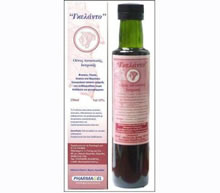
Dictionary of Allergies .. Acacia
Acacia (White sallow, Wattle, Sydney golden) [(L) Acacia longifolia, (Ger.) Wattle, Mimosa, (Fr.) Mimosa, (Gr.) :
Acacia is a large genus including more than 1000 species of small, evergreen and fast-growing trees. Acacias are native of Australia, Africa and North and South America. They have been introduced in Italy, Spain, France, Portugal, and Greece.
It flowers in early spring and produces extensive amounts of allergenic pollen which may induce allergic rhinitis symptoms, asthma, rhinoconjunctivitis in sensitised persons. Acacia bark and wood are pregnant with oils and terpenes which may act as occupational allergies. There is extensive cross-reactivity among the species of the genus acacia and Rye grass pollen allergens [1]. It is expected cross-reactivity among members of legume family [2].
Acacia gum is a product of Acacia [Gum Arabic, Senegal gum, Sudan gum (f297)] and may induce food allergy symptoms in some sensitised individuals.
Pharmaceutical industry workers are exposed to dust of gum arabic in the tablet coating plant and may complain of work-related shortness of breath, chest tightness, runny nose, itching and redness of the eyes [4].
Immunoglobulin E (IgE), directed against components of Acacia (wattle) pollen, has been detected by (RAST) in the sera of some children and adults who develop allergic symptoms in the presence of flowering Acacia trees in Australia. All these subjects also had high levels of IgE directed against Lolium perenne (rye grass) pollen. Inhibition by RAST showed that most of the IgE molecules which bound to Acacia pollen components also bound to L. perenne pollen extracts, and to Glycoprotein 1, the major allergen of L. perenne pollen. In these assays, the allergens have been immobilized on polyvinyl chloride microtitre trays: the sensitivity of this approach is compared to that of commercial RAST kits [3]. Sensitization to gum arabic carbohydrate structures occurs casually in atopic patients with pollen sensitization without obvious exposure to gum arabic. According to the study of Sander I, et al (2006) allergy to gum arabic is mediated preferentially by IgE antibodies directed to polypeptide chains of gum arabic [4]. t19 is the symbol of acacia in RAST.
References
1. Yman L. Botanical relations and immunological cross-reactions in pollen allergy. 2nd ed. Revised and enlarged, 1982. Pharmacia Diagnostics AB. Uppsala, Sweden.
2. Fotisch K, Fah J, Wuthrich B, et al. IgE antibodies specific for carbohydrates in a patient allergic to gum arabic {Acacia Senegal). Allergy 1998;53:1043-1051
3. Howlett BJ, Hill DJ, Knox RB. Cross-reactivity between Acacia (wattle) and rye grass pollen allergens. Detection of allergens in Acacia (wattle) pollen. Clin Allergy 1982 May;12(3):259-68.
4. Sander I, Raulf-Heimsoth M, Wiemer K, Kespohl S, Brüning T, Merget R. Sensitization due to gum arabic (Acacia senegal): the cause of occupational allergic asthma or crossreaction to carbohydrates? Int Arch Allergy Immunol. 2006;141(1):51-6. Epub 2006 Jun 27.
Γκέλης Ν.Δ. - Λεξικό Αλλεργίας - Εκδόσεις ΒΕΛΛΕΡOΦΟΝΤΗΣ - Κόρινθος 2013
Gelis Ν.D. - Dictionary of Allergies - VELLEROFONTIS Publications - Corinth 2013




